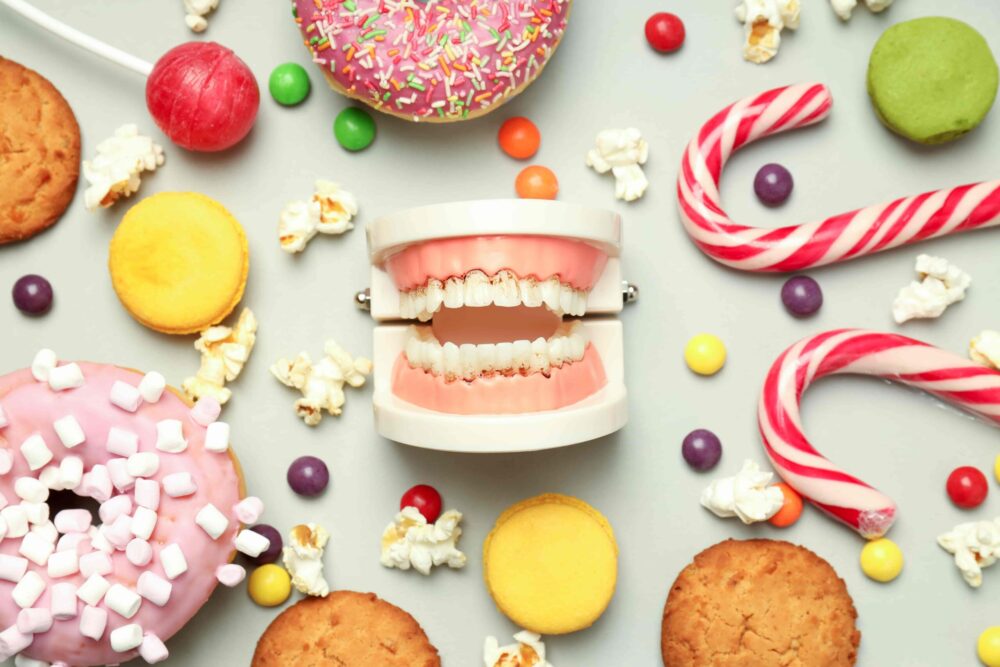Learn how cavities form, whether they can be reversed, and what you can do to protect your teeth at every stage.
Cavities are one of the most common dental problems we treat at Pecan Tree Family Dentistry, and a question we often get is: “Can you reverse a cavity?” The answer depends on how early it’s caught.
Let’s dive into how cavities develop, when they can be reversed, and how to keep your smile strong and decay-free.
How Do Cavities Form?
Cavities develop in stages, starting with the breakdown of enamel and eventually progressing deeper into the tooth. Here’s a breakdown:
🦠 1. Plaque Buildup
Bacteria in your mouth feed on sugars and starches, creating acids. These acids stick to your teeth as plaque and begin to wear away the enamel.
🦷 2. Demineralization Begins
The first visible sign of decay appears as white spots, where minerals like calcium and phosphate have been lost from the enamel.
🕳️ 3. Enamel Breakdown
Without intervention, the enamel weakens until a hole (cavity) forms.
⚠️ 4. Dentin Damage and Nerve Involvement
If decay reaches the dentin or deeper into the pulp, it can lead to tooth sensitivity, pain, and even infection.
📌 Explore More: Why Are My Teeth Sensitive?
Can Cavities Be Reversed?
✅ Yes—If Caught Early (Demineralization Stage)
In the earliest stage, when enamel is weakened but not yet broken, you can help your teeth remineralize and stop cavity progression.
❌ No—If a Cavity Has Formed
Once a visible hole appears, the decay is permanent. At this point, only a dentist can restore the tooth using:
- Fillings
- Crowns
- Root canals (in advanced cases)
📌 Related Reading: What Is a Dental Filling?
How to Reverse Early Tooth Decay
1️⃣ Use Fluoride Daily
Fluoride strengthens enamel and helps reverse demineralization.
- Brush with fluoride toothpaste
- Use fluoride rinses
- Drink fluoridated water
- Ask your dentist about in-office fluoride treatments
📌 Learn More: Understanding the Use and Safety of Fluoride in Dentistry
2️⃣ Eat a Tooth-Friendly Diet
Nutrient-rich foods support enamel repair and prevent decay. Focus on:
✔️ Calcium-rich foods (dairy, leafy greens, almonds)
✔️ Phosphorus-rich foods (eggs, fish, nuts)
✔️ Crunchy fruits/veggies (stimulate saliva production)
❌ Limit sugary and acidic snacks and drinks
3️⃣ Brush, Floss, Rinse, Repeat
A strong home routine goes a long way:
- Brush twice daily with fluoride toothpaste
- Floss every day
- Use a fluoride rinse
- See your dentist every 6 months
📌 Extra Tips: Simple Home Care Tips for a Healthy Smile
4️⃣ Consider Dental Sealants
Dental sealants are a preventive option that coat the chewing surfaces of molars, where cavities are most likely to form. They’re great for kids—and adults, too.
When to See a Dentist
If you notice:
- Tooth sensitivity
- White or dark spots on teeth
- Pain when chewing
- Visible pits or holes
…it’s time to schedule an appointment. Early detection can save your tooth and avoid more costly procedures later.
📞 Contact us today to book your exam or cleaning. Prevention is always better than restoration.



